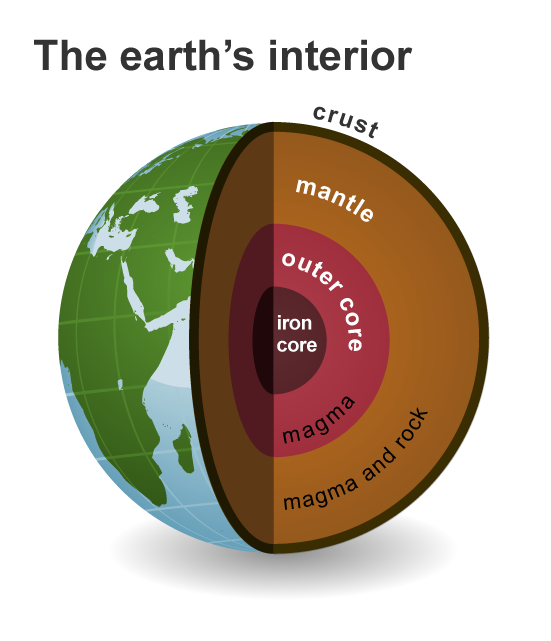What is geothermal energy?
Geothermal energy is heat within the earth. The word geothermal comes from the Greek words geo (earth) and therme (heat). Geothermal energy is a renewable energy source because heat is continuously produced inside the earth. People use geothermal heat for bathing, for heating buildings, and for generating electricity.
Geothermal energy comes from deep inside the earth
The slow decay of radioactive particles in the earth's core, a process that happens in all rocks, produces geothermal energy.
The earth has four major parts, or layers:
- An inner core of solid iron that is about 1,500 miles in diameter
- An outer core of hot molten rock called magma that is about 1,500 miles thick.
- A mantle of magma and rock surrounding the outer core that is about 1,800 miles thick
- A crust of solid rock that forms the continents and ocean floors that is 15 miles to 35 miles thick under the continents and 3 miles to 5 miles thick under the oceans
Scientists have discovered that the temperature of the earth's inner core is about 10,800 degrees Fahrenheit (°F), which is as hot as the surface of the sun. Temperatures in the mantle range from about 392°F near the mantle-crust boundary to about 7,230°F near the mantle-core boundary. Rocks and water absorb heat from magma deep underground. The rocks and water found deeper underground have the highest temperatures.
The earth's crust is broken into pieces called tectonic plates. Magma comes close to the earth's surface near the edges of these plates and can move to the surface of the earth through gaps in the plates. This is where volcanoes occur. Magma that reaches the earth's surface is called lava.
Last updated: December 27, 2022

